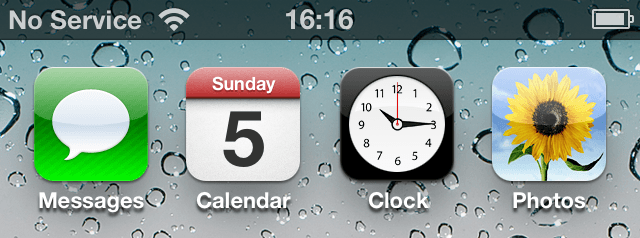Apple - Death Through Familiarity
I like predicting the death of the iPhone. I've been doing it since the device was first released - and I'm sure, one day, my doom-mongering will be proved correct!
Apple is at an interesting nexus with its iPhone. It's hugely popular, vastly profitable, beloved by millions, and plagiarised by its competitors. The only fly in the ointment? It's just a little bit dull!
Dull is, of course, another word for consistent. Predictable. Comforting. Pick up an original iPhone and the newly released model and see if you can spot the difference in the user interface. Yes, the screen is nicer and the processor is faster - but the same basic grid of static icons have persisted throughout the last 5 years. The basic UI elements haven't changed a great deal since inception.
Customers love the fact that they don't have to learn a new set of icons and interactions. That one of the reasons that iPhone users are statistically unlikely to churn away from the platform. Not only do all their games, apps, music, and settings seamlessly transfer to the new device - so does their learned behaviour.
The problem that Apple now faces is how it will incorporate innovative new features into the iPhone without disturbing the existing paradigm of static icons and modal dialogue boxes. It has successfully manage to cram in Android's notification bar without too much trouble. Will it be able to add widgets, screen gestures, radial menus, lateral scrolling, and all the other UI tools which customers are learning to love on other platforms?
This was the problem that Nokia faced with Symbian. The Symbian UI was clean, uncluttered, simple and static - much like iOS. Customers bought Symbian phones in their droves because they appreciated the design consistency.
Then things changed.
The Internet became popular and all of a sudden Symbian users were bombarded by notifications "helpfully" asking them if they were really sure that they want wanted to connect to the Internet?
Notifications - for so long the preserve of SMS only - suddenly had to be extended to MySpace and Facebook.
Apps needed to run in the background to provide a constant source of information to the user.
The architecture and UI of Symbian just wasn't up to the job. Even the very latest - and possibly last - device, the N8, feels like a phone from 10 years ago with the modern features shoehorned in. Last year, Symbian was taken out to the woodshed and shot by Stephen Elop. It was a small mercy (and one likely to be visited on Elop by the Nokia shareholders before too long).
Is the iPhone about to reach that tipping point? Users with "unlimited" data plans are still forced to download certain large items over wifi. Users dissatisfied with the browser or the mapping apps are unable to set other apps to take over their duties. Power users are frustrated that they can't use better keyboards.
All little niggles, for now - and all straightforward to fix. But in fixing those problems, and modernising the UI, Apple risks alienating its core customers




I don't see the issue with having the same static grid of icons and sticking with that concept. I don't find it dull. It's the apps where the action happens. Same as on the desktop. All those Android widgets are just noise if you ask me. You don't need to agree with that view but this is how most Apple users see it i would say.
We talked about this on the podcast recently: http://soundcloud.com/361degrees/s04-e01
Rafe pointed out that no smartphone eco-system has survived (successfully) for much more that 6 years - 'Rafe's 6 year rule' - so we are in new territory here.